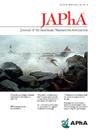重印本:门诊药剂师配药对阿片类药物使用障碍诊所的影响。
IF 2.5
4区 医学
Q3 PHARMACOLOGY & PHARMACY
Journal of the American Pharmacists Association
Pub Date : 2024-07-01
DOI:10.1016/j.japh.2024.102181
引用次数: 0
摘要
背景:治疗阿片类药物使用障碍的药物可有效减少阿片类药物死亡人数,但获取药物可能是一个问题。将一名门诊药剂师调往门诊诊所每周配发丁丙诺啡可能会促进丁丙诺啡的覆盖率,并减少获取和咨询障碍:本研究旨在评估在丁丙诺啡门诊配备常驻门诊药剂师是否会对以下两方面产生积极影响:(1)慈善医疗每张处方的平均费用;(2)患者对现场药剂师的基本满意度:从药剂师门诊前 16 周和药剂师到场后 16 周的配药记录中抽取了患者的人口统计学特征、丁丙诺啡配方、保险类型和未支付费用。采用卡方检验法检验了两个时间段内保险类型的差异,并采用独立样本 t 检验法比较了两个时间段内慈善护理收取的平均无赔付处方费用。药剂师在现场进行了一项简短的满意度调查,通过 "是 "的回答频率和自由文本评论对满意度进行了分析:结果:共有 38 名患者在治疗前后接受了丁丙诺啡治疗。药剂师到场后,更多的患者使用了医疗补助或私人保险,每张处方的平均无保险费用从 55.00 美元(标清 68.7)降至 36.97 美元(标清 60.1)(P = 0.002)。患者的满意度很高,大多数患者表示他们更愿意提出问题、领取处方,并在药剂师的指导下在诊所服药:药剂师成功地将一部分以前由慈善护理支付的处方药转为医疗补助或私人保险。这一转变使慈善护理费用减少了 2950.20 美元,并降低了每张处方的平均无保险费用。药剂师在诊所的存在似乎减少了障碍,尤其是与不便有关的障碍。本文章由计算机程序翻译,如有差异,请以英文原文为准。
Reprint of: Impact of outpatient pharmacist dispensing in an opioid use disorder clinic
Background
Medications for opioid use disorder are effective in reducing opioid deaths, but access can be an issue. Relocating an outpatient pharmacist for weekly buprenorphine dispensing in an outpatient clinic may facilitate coverage for buprenorphine and mitigate access and counseling barriers.
Objectives
This study aimed to evaluate whether staffing an outpatient resident pharmacist to dispense in the buprenorphine clinic had a positive impact on (1) mean cost per prescription charged to charity care and (2) basic elements of patient satisfaction with the on-site pharmacist.
Methods
Patient demographics, buprenorphine formulation, insurance type, and uncovered costs were abstracted from dispensing records in the 16 weeks before the pharmacist clinic presence and 16 weeks with the pharmacist present. The difference in insurance types across the 2 periods was tested using a chi-square test, and the mean uncovered prescription costs charged to charity care for the 2 periods was compared using an independent-samples t test. A brief survey was administered while the pharmacist was on-site to evaluate satisfaction, which was analyzed with frequencies of “yes” responses and free-text comments.
Results
A total of 38 patients received buprenorphine during both the pre- and postperiods. Once the pharmacist was on-site, more patients used Medicaid or private insurance, decreasing the mean uncovered cost per prescription from $55.00 (SD 68.7) to $36.97 (SD 60.1) (P = 0.002). Patients reported high levels of satisfaction with most reporting they were more likely to ask questions, pick up their prescriptions, and take their medicine with the pharmacist in the clinic.
Conclusions
The pharmacist successfully transitioned a portion of prescriptions previously covered by charity care to Medicaid or private insurance. This shift led to a decrease in charity care costs by $2950.20 and a reduction in the average uncovered cost per prescription. The pharmacist’s presence in the clinic seemed to reduce barriers especially related to inconvenience.
求助全文
通过发布文献求助,成功后即可免费获取论文全文。
去求助
来源期刊
CiteScore
3.30
自引率
14.30%
发文量
336
审稿时长
46 days
期刊介绍:
The Journal of the American Pharmacists Association is the official peer-reviewed journal of the American Pharmacists Association (APhA), providing information on pharmaceutical care, drug therapy, diseases and other health issues, trends in pharmacy practice and therapeutics, informed opinion, and original research. JAPhA publishes original research, reviews, experiences, and opinion articles that link science to contemporary pharmacy practice to improve patient care.

 求助内容:
求助内容: 应助结果提醒方式:
应助结果提醒方式:


